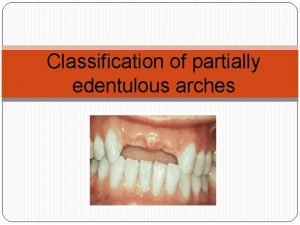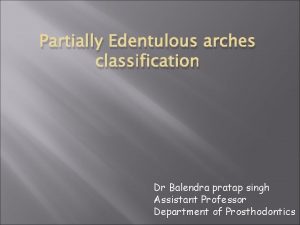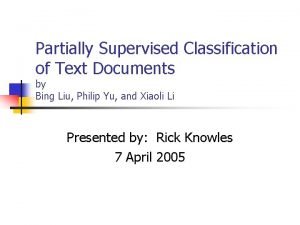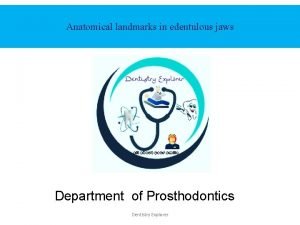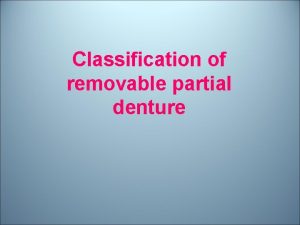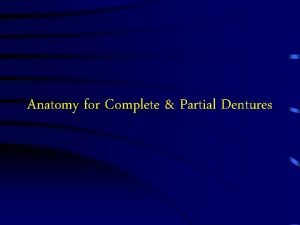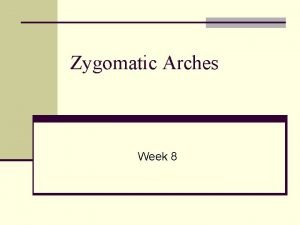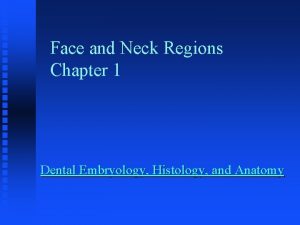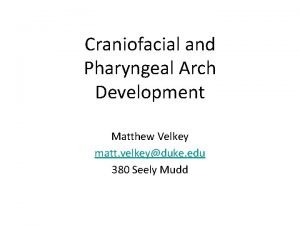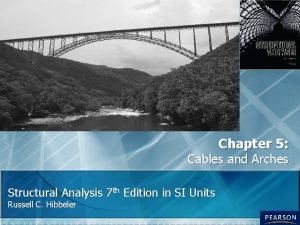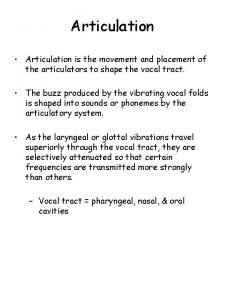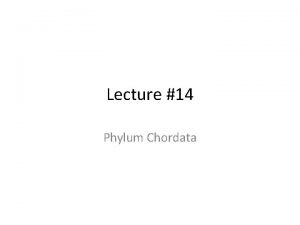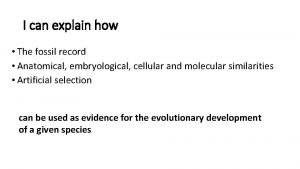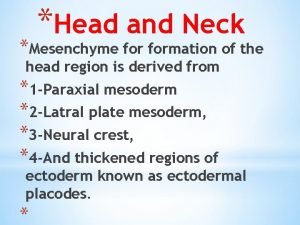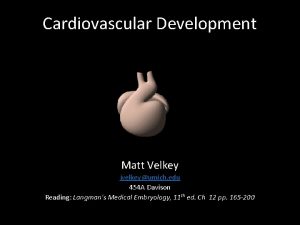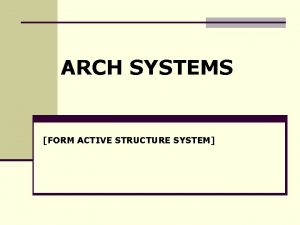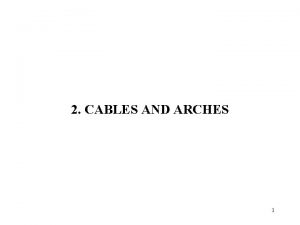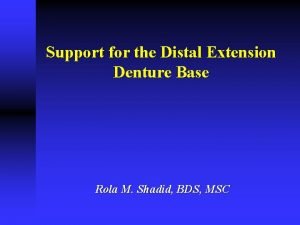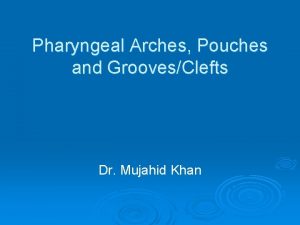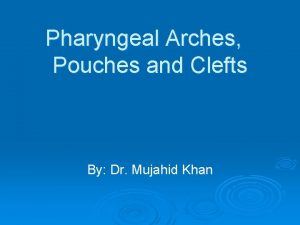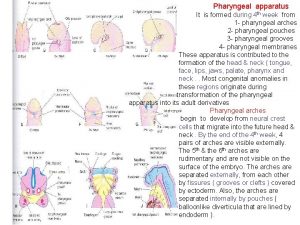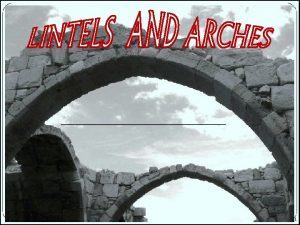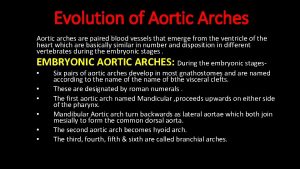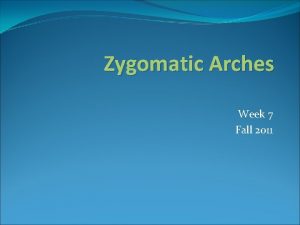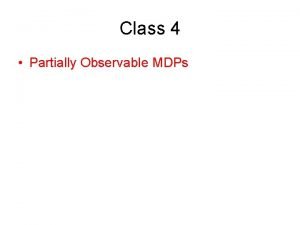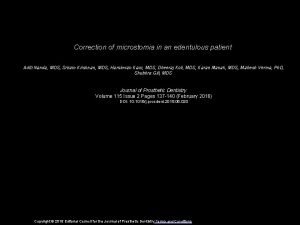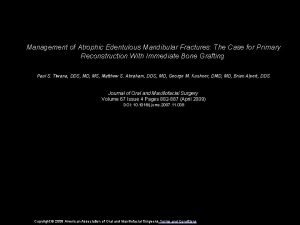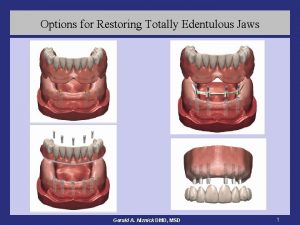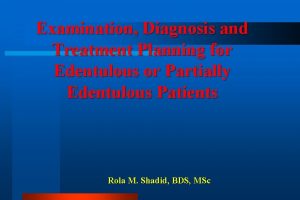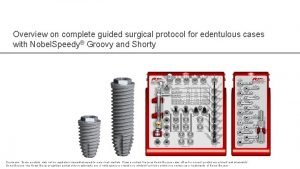Classification of partially edentulous arches REQUIREMENTS OF AN

































- Slides: 33

Classification of partially edentulous arches

REQUIREMENTS OF AN ACCEPTABLE METHOD OF CLASSIFICATION v It should permit immediate visualization of the type of partially edentulous arch being considered. v It should permit immediate differentiation between the tooth-borne and the tooth and tissue-supported removable partial denture. v It should be universally acceptable

Need for classification: v Classification itself facilitates case history recording and exchange of views between practitioners. v Provide general acceptance of particular system. v Classification should give some clues to the treatment plan of particular patient. v Provide a guide to the denture design. v Facilitates the visualization of the edentulous arches.

Various Classifications • Cummer’s system – 1921 • The Kennedy System – 1923 • Baily’s system – 1928 • Neurohrs System – 1939 • Mauks system – 1941 • Godfrey’s system – 1951 • Beckett’s system – 1953

• Friedman’s system – 1953 • The Austin Ledge – 1956 • The Skinner’s system – 1957 • The Applegate – Kennedy system – 1960 • Swensons System – 1960 • Avants System – 1966

KENNEDY’S CLASSIFICATION üProposed by Dr. Edward Kennedy in 1925. üThe most widely used method of classification. Kennedy’s original classification contains the following four classes, with certain modifications.

Class-I Bilateral edentulous area located posterior to the remaining natural teeth.

Class II Unilateral edentulous area located posterior to the remaining natural teeth.

Class III A unilateral edentulous area with natural teeth both anterior and posterior to it.

Class IV Single but bilateral edentulous area located anterior to the remaining natural teeth

Applegate-Kennedy Classification Class V: Described as an edentulous area bounded anteriorly and posteriorly by natural teeth but in which the anterior abutment(e. g. lateral incisor) is not suitable for support.

Class VI: is an edentulous situation in which the teeth adjacent to the space are capable of total support of the required prosthesis.

Applegate’s Rules for Applying the Kennedy Classification Rule 1. Classification should follow rather than precede extractions that might alter the original classification. Rule 2. If the third molar is missing and not to be replaced, it is not considered in the classification.

Rule 3. If a third molar is present and is to be used as an abutment, it is considered in the classification.

Rule 4. If a second molar is missing and is not replaced (that is the opposing molar is also missing and not to be replaced), it is not considered in the classification.

Rule 5. The most posterior edentulous area or areas always determine the classification

Rule 6. Edentulous areas other than those determining the classification are referred to as modification spaces and are designated by their number.

Rule 7. The extent of the modification is not considered, only the number of additional edentulous areas. .

Rule 8. There can be no modification areas in class IV arches. Any edentulous area lying posterior to the single bilateral area determines the classification.

Cummer’s classification: (1920) Classification based on the number and the position of the direct retainers. Class I: A partially edentulous arch in which two diagonally opposite teeth are chosen as abutment teeth. Diagonal

Class II: A partially edentulous arch in which two diametrically opposite teeth are chosen as abutment teeth. Diametric

Class III: A partial edentulous arch in which one or more teeth on the same side are chosen as abutment teeth. Unilateral

Class IV: Three direct retainers in a triangular (rarely quadrangular) relationship. multilateral

Bailyn’s classification/Bailyn’s system (1928) üCharles Bailyn introduced this classification based on whether the prostheses is tooth borne, tissue borne or a combination of the two He divided all removable partial dentures into Anterior restorations – saddle areas (denture bases) anterior to the first bicuspids. Posterior restorations – saddle areas posterior to the cuspids.

Sub- classification Class I: Abutment teeth present at each extremity of a saddle area representing a span of not more than three teeth. Class II: There is no distal abutment tooth. Class III: Tooth support at both extremities of the saddle area representing a span of more than three teeth Class I is tooth supported. Class II and Class III are tissue supported.

Skinners classification Influenced by Cummers classification. His classification had five classes of which few were similar to Cummers. Class I That group of removable partial denture which are related to both anterior and posterior to the denture base. These are found in both maxillary and mandibular arches and occur both unilaterally and bilaterally.


Class II That group of RPD in which all the teeth are posterior to the denture base which functions as a partial denture unit.

Class III That group in which all the abutment teeth are related anterior to denture base which functions as a partial denture base

Class IV That group in which the denture bases are both anterior and posterior to the remaining teeth. The abutment teeth are in the center/between the function denture bases.

Class V: is that group in which all of the abutment teeth are unilateral to the denture base.


 Applegates classification
Applegates classification Applegate rules
Applegate rules Partially supervised classification of text documents
Partially supervised classification of text documents Anatomical landmarks of complete denture
Anatomical landmarks of complete denture Bailyn classification
Bailyn classification Retrozygomal fossa
Retrozygomal fossa Smv view
Smv view Which features of the sun look like huge cloudlike arches
Which features of the sun look like huge cloudlike arches Pharyngeal arches diagram
Pharyngeal arches diagram Palatine fovea
Palatine fovea Structures derived from pharyngeal arches
Structures derived from pharyngeal arches Pharyngeal arches
Pharyngeal arches Cables in structural analysis
Cables in structural analysis Faucial pillars
Faucial pillars Arches national park cua
Arches national park cua Nba expansion st louis
Nba expansion st louis Is phylum chordata a vertebrate
Is phylum chordata a vertebrate Gill arches
Gill arches Pharyngeal arches table
Pharyngeal arches table Medial longitudinal arch pillar
Medial longitudinal arch pillar Outllon
Outllon Arches national park geology
Arches national park geology American arches
American arches Vector active structures examples
Vector active structures examples Cables and arches
Cables and arches Weathering and erosion jeopardy
Weathering and erosion jeopardy Support for distal extension denture base
Support for distal extension denture base Pharyngeal arches
Pharyngeal arches Pharyngeal pouches definition
Pharyngeal pouches definition Pharyngeal pouches derivatives
Pharyngeal pouches derivatives Bad arches
Bad arches Ligaments on bottom of foot
Ligaments on bottom of foot Development of tongue
Development of tongue Coastal landforms pictures
Coastal landforms pictures
